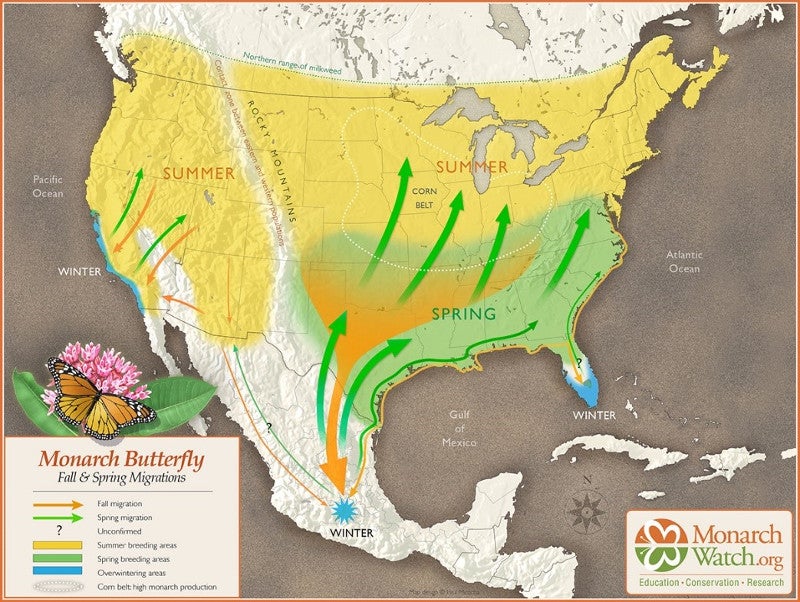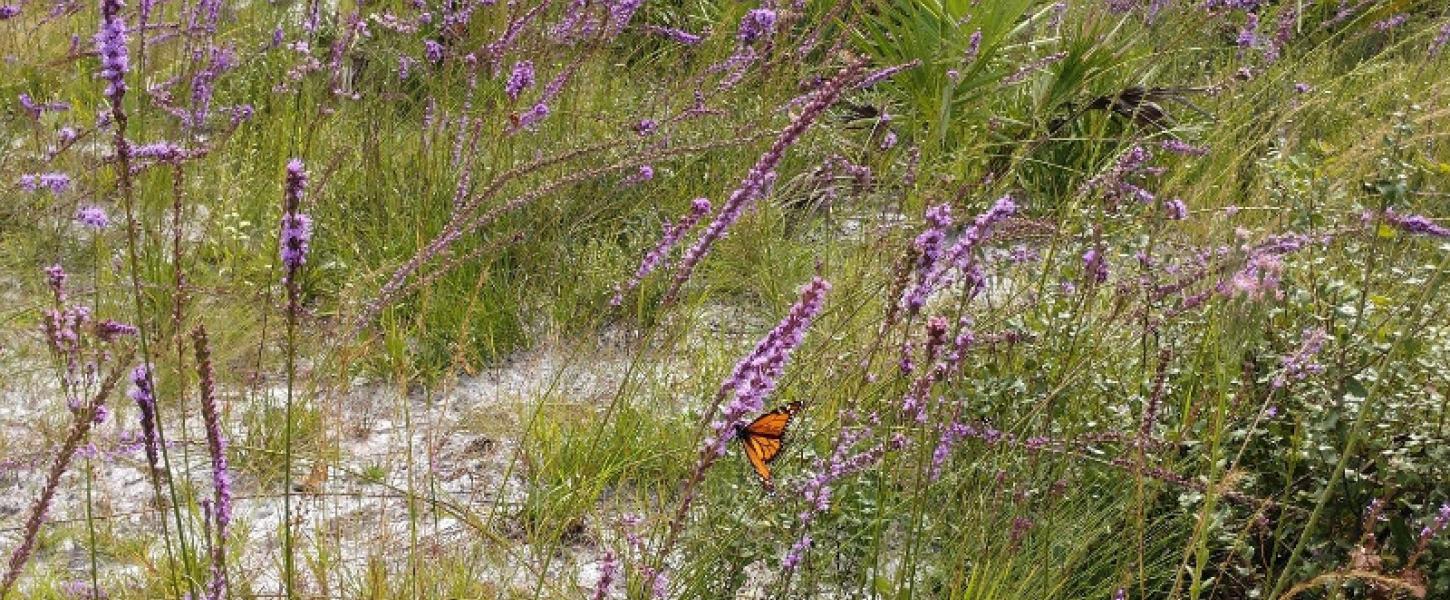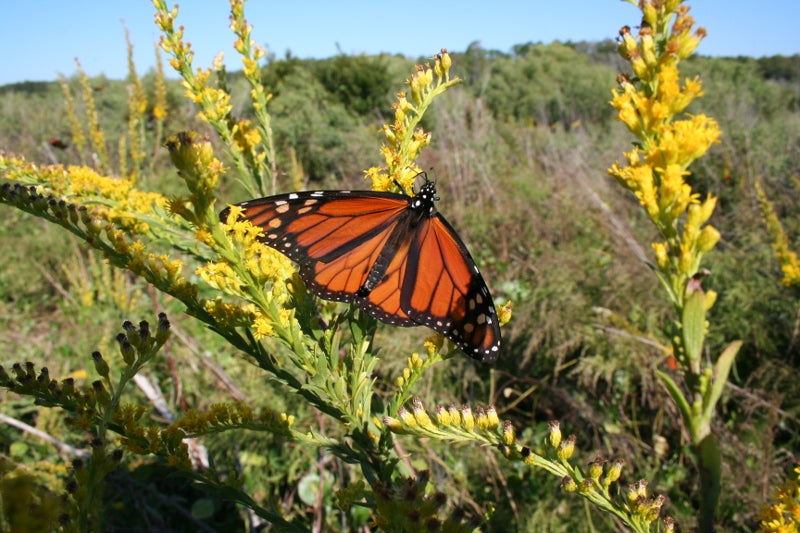
Monarch Migration at Amelia Island

Migration is not just for the birds. The dune swales and forested wetlands at the south end of Amelia Island State Park are a crucial stopover for monarch butterflies. Each year these tiny winged insects travel enormous distances, up to 3,000 miles in fact, between food sources and roosting areas.
Unlike most other insects in North America, these butterflies cannot survive a long and cold winter. Instead they fly to Mexico, South Florida or coastal California to roost during the colder months.
Many of these butterflies will only ever make one leg of the journey due to their short life-cycles. Routes are genetically ingrained rather than learned from experienced butterflies. It is their children’s grandchildren that will return south the following fall.

Migration is a biannual occurrence and the spring and fall wildflowers at the park make it an ideal fuel stop.
As temperatures begin to dip in the northern United States at the end of summer, newly emerged monarchs bulk up and head south. Fat from the nectar of wildflowers, especially milkweed, is stored in their abdomen and helps them survive a winter fast. Otherwise solitary, butterflies will group up in clusters during southward migrations, especially during cooler nights. This helps to conserve heat and energy for these cold-blooded travelers.
The unique contours of interdunal swales and historic mosquito ditching at the south end of Amelia Island trap freshwater and make it an attractive habitat for a diversity of wildflowers, food for the hungry butterflies. Passionflower, indian blanket, partridge pea, morning glory, seashore mallows, standing cypress and marsh pinks carpet the wetlands seasonally. Their rich, sugary nectar and the spacious flats of the park lands invite the butterflies to the bounty.

The peak migration viewing time for the butterflies at this latitude is from early to mid-October. You can help scientists studying the monarchs by reporting sightings of tagged butterflies.
Find more information about these amazing animals by visiting Monarch Watch.